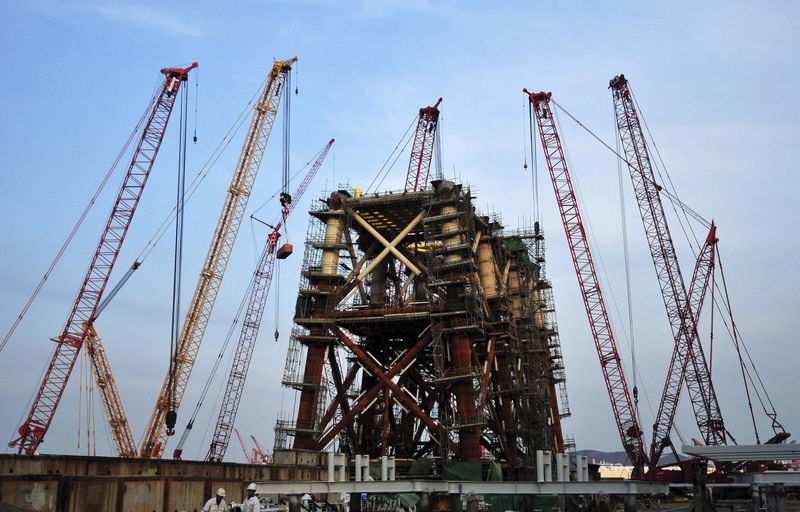By Peter Nurse
Investing.com - Oil markets saw volatile trading Friday, as the overall tone remained bearish in the face of extreme oversupply in the physical market despite recent attempts to cut global production.
AT 8:50 AM ET (1250 GMT), U.S. crude futures, in the form of the front month May WTI contract, traded 10% lower at $17.87 a barrel, posting a new 18-year low.
However, most open interest and volume is now concentrated in the June contract, which was markedly less volatile.
The international benchmark Brent contract rose 0.5% to $27.95.
The major oil producers agreed to cut supply by almost 10 million barrels a day a week ago, a record amount, and Russia and Saudi Arabia hinted at further production cuts overnight.
They will “continue to closely monitor the oil market and are prepared to take further measures jointly with OPEC+ and other producers if these are deemed necessary,” Russian Energy Minister Alexander Novak and his Saudi counterpart Prince Abdulaziz bin Salman said in a joint statement.
Yet this has limited impact on an oil market awash with supply and facing the biggest hit to demand in decades - a hit that was amply illustrated earlier Friday by the slump of 6.8% in China’s first quarter GDP.
Still, there could be glimmers of light ahead.
Chinese refiners are starting to buy low-price oil from all over the world as the world’s second largest economy, and Asia’s biggest, begins to emerge from the virus-driven shutdown, Bloomberg reported.
Varieties from as far afield as Alaska and Brazil have been offered at steep discounts to global benchmark prices over the past week as sellers scrambled to secure buyers. Processors in China -- where throughput is back to pre-virus levels -- are buying these as much of the rest of the world remains closed.
Attention now turns to the extent of the slowdown in U.S. production when Baker Hughes releases its rig count at 1 PM ET (17:00 GMT).
The oil rig count came in at 504 last week. It was up around 678 at the end of February.
The U.S. oil and gas industry is estimated to owe more than $200 billion to lenders through loans backed by oil and gas reserves. ConocoPhiliips, which has one of the industry's stronger balance sheets, said on Thursday it would cut 225,000 barrels a day of output given the low price environment. More levered producers, however, don't have that luxury given their debt issues.
